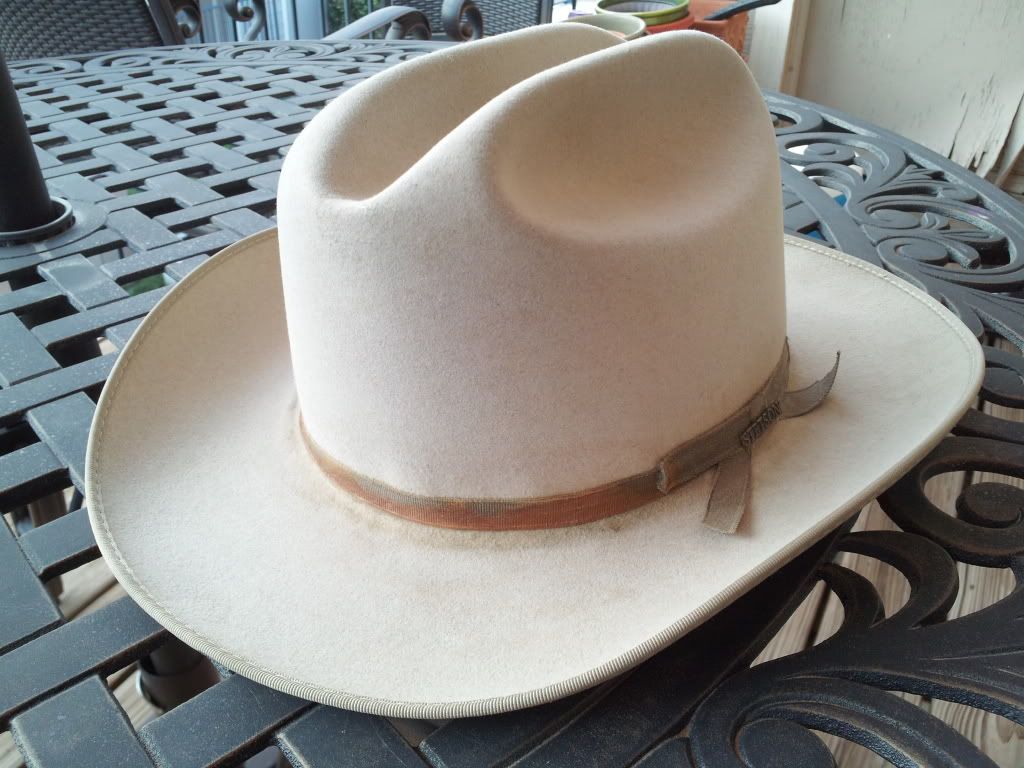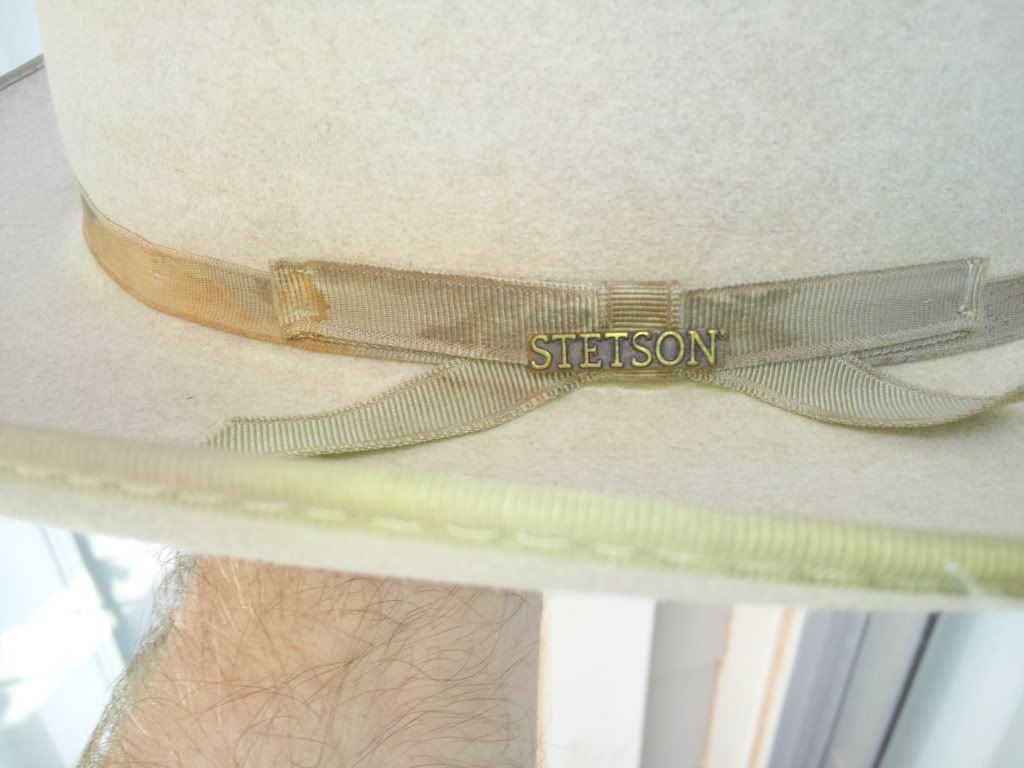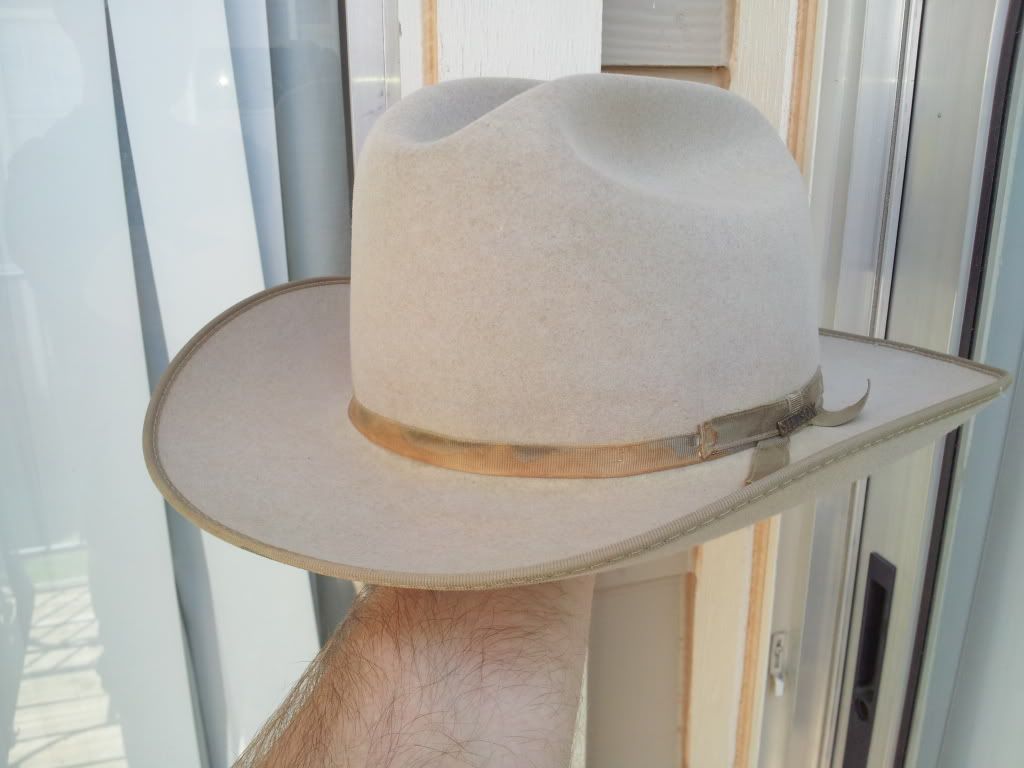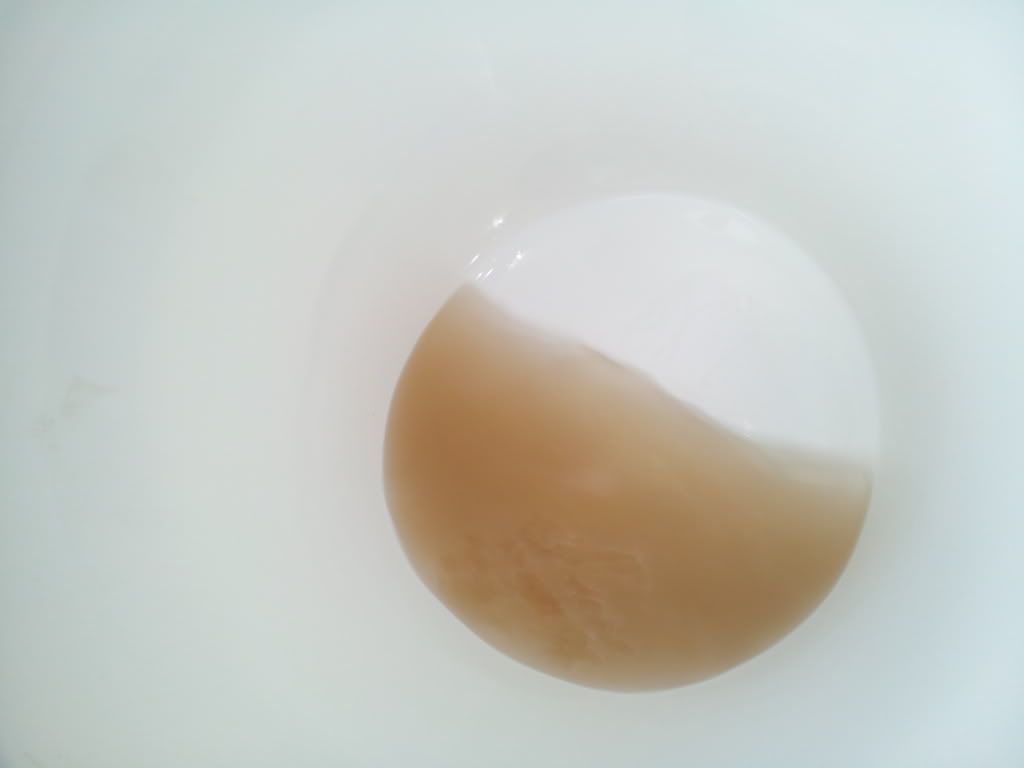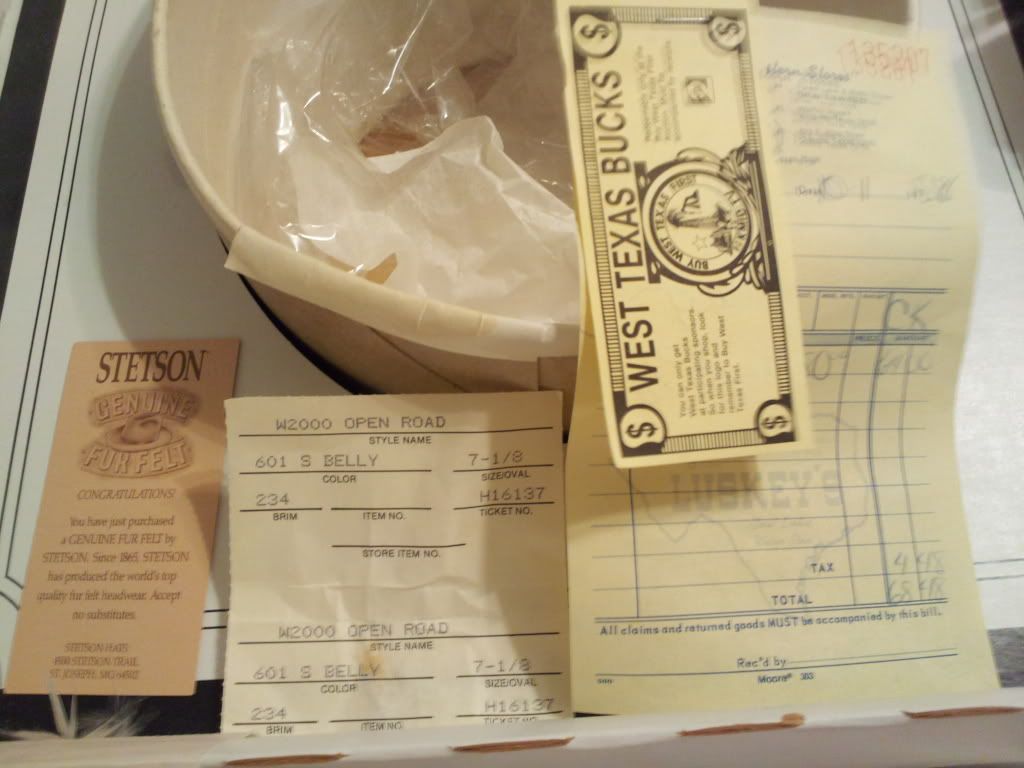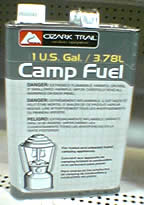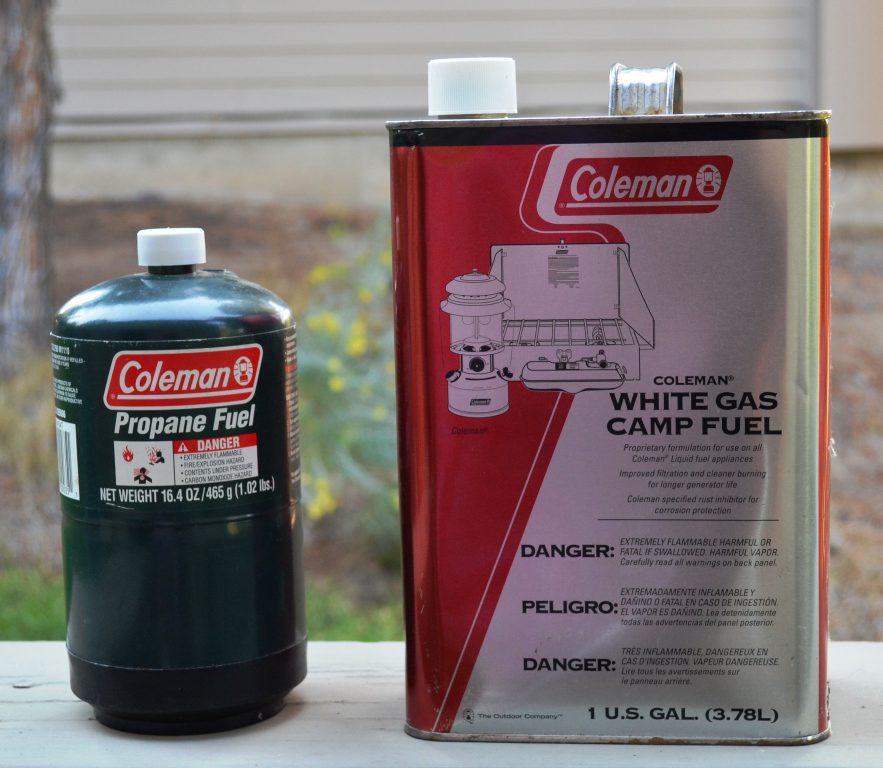barrowjh
One Too Many
- Messages
- 1,398
- Location
- Maryville Tennessee
I use Lexol on the sweatband, liberally applied to the back 'rough' side of the leather, before using the gasoline.
Heating the gasoline is explained on pages 41 & 42 of the reprint "Scientific Hat Finishing and Renovating" by Henry L. Ermatinger, 1919. To quote " Place the can in a small boiler or tub containing about two gallons of boiling water, which should be carried away from your heating apparatus before placing the can therein."
In more modern language, a pint jar about 2/3rds full of coleman gas, and a pan for boiling the water. There should be a couple of inches (maybe 1 1/2?) between the glass and the sides of the pan all around, and the top of the pan does not need to exceed the height of the jar. Bring the water to a robust boil, move it off the stove, carry it outside. Place the jar in the pan, ok to set it on the bottom of the pan, loosen the lid so that pressure does not build up, let it heat up for a few minutes. The water only needs to come up about 2/3rds of the way up the top of the jar, don't immerse the jar in water, not necessary. I then pour about half of that jar into a plastic butter tub and lower that carefully past the sweatband and into the top of the crown (hat upside down, of course). Pour it out, lift the hat and let that gas drip through the crown into a tub, tip it a bit and rotate to ensure gas goes up the felt toward the brim.
With the remaining gasoline, pour a little directly onto any signficant spots on the brim, and use the paintbrush to spread the remaining gas lightly around any dry felt (preventing the water circle lines, etc.). Continue to spot treat any nasty spot with the last few spoonfuls, dab the gas on the spot, press an old towel on the spot to try and absorb the stain, whatever.
I always do the gas bath last, because you are also removing spots (water circle lines) you created by using the scout's or other cleaners on a nasty area. From this point forward, any further cleaning of the hat has to be the whole hat because those darned water circle lines will always foil any attempt to spot clean. I have some rubber-type chem gloves to keep the gas off of my hands, and they insulate well enough that I can handle the jar. Doing all of this outside helps disperse away the fumes. Pages 38 - 39 contain Ermatinger's section on 'Gasoline Precautions' - the safety briefing.
There really is no substitute for experience. You will teach yourself how much trauma a felt can handle before you are doing more harm than good. I'm probably already into overkill with my cleaning methods, teach ya to appreciate a full-service hatter, for sure.
Heating the gasoline is explained on pages 41 & 42 of the reprint "Scientific Hat Finishing and Renovating" by Henry L. Ermatinger, 1919. To quote " Place the can in a small boiler or tub containing about two gallons of boiling water, which should be carried away from your heating apparatus before placing the can therein."
In more modern language, a pint jar about 2/3rds full of coleman gas, and a pan for boiling the water. There should be a couple of inches (maybe 1 1/2?) between the glass and the sides of the pan all around, and the top of the pan does not need to exceed the height of the jar. Bring the water to a robust boil, move it off the stove, carry it outside. Place the jar in the pan, ok to set it on the bottom of the pan, loosen the lid so that pressure does not build up, let it heat up for a few minutes. The water only needs to come up about 2/3rds of the way up the top of the jar, don't immerse the jar in water, not necessary. I then pour about half of that jar into a plastic butter tub and lower that carefully past the sweatband and into the top of the crown (hat upside down, of course). Pour it out, lift the hat and let that gas drip through the crown into a tub, tip it a bit and rotate to ensure gas goes up the felt toward the brim.
With the remaining gasoline, pour a little directly onto any signficant spots on the brim, and use the paintbrush to spread the remaining gas lightly around any dry felt (preventing the water circle lines, etc.). Continue to spot treat any nasty spot with the last few spoonfuls, dab the gas on the spot, press an old towel on the spot to try and absorb the stain, whatever.
I always do the gas bath last, because you are also removing spots (water circle lines) you created by using the scout's or other cleaners on a nasty area. From this point forward, any further cleaning of the hat has to be the whole hat because those darned water circle lines will always foil any attempt to spot clean. I have some rubber-type chem gloves to keep the gas off of my hands, and they insulate well enough that I can handle the jar. Doing all of this outside helps disperse away the fumes. Pages 38 - 39 contain Ermatinger's section on 'Gasoline Precautions' - the safety briefing.
There really is no substitute for experience. You will teach yourself how much trauma a felt can handle before you are doing more harm than good. I'm probably already into overkill with my cleaning methods, teach ya to appreciate a full-service hatter, for sure.
